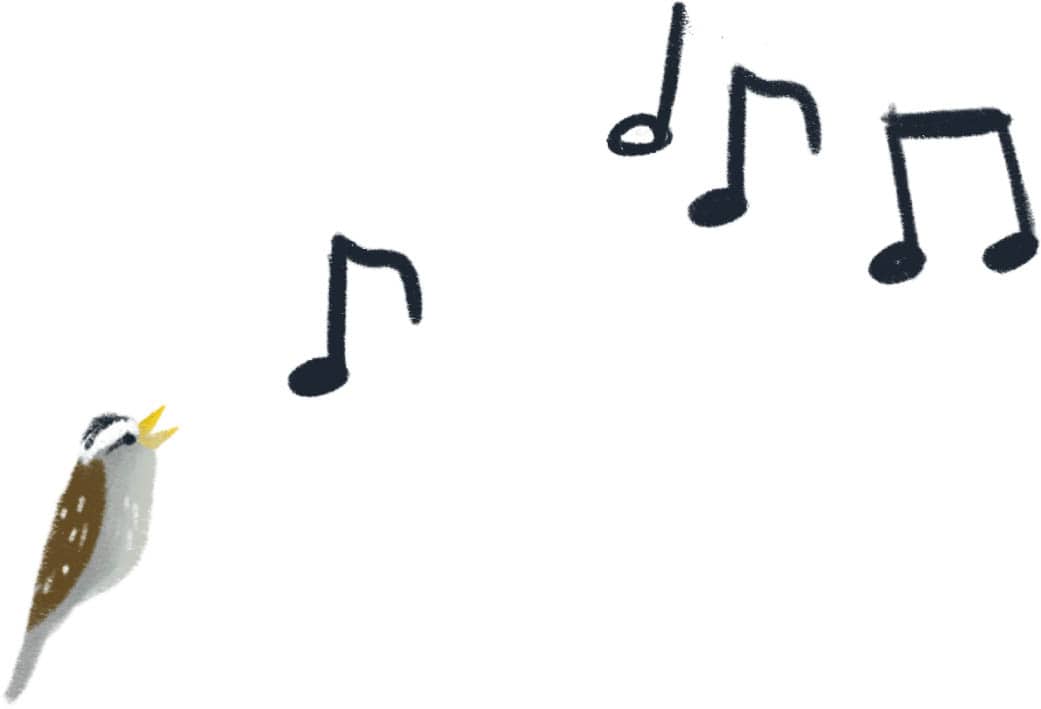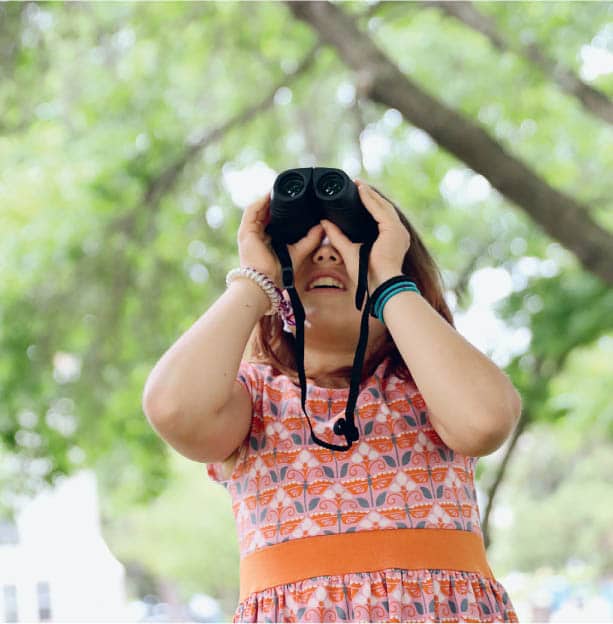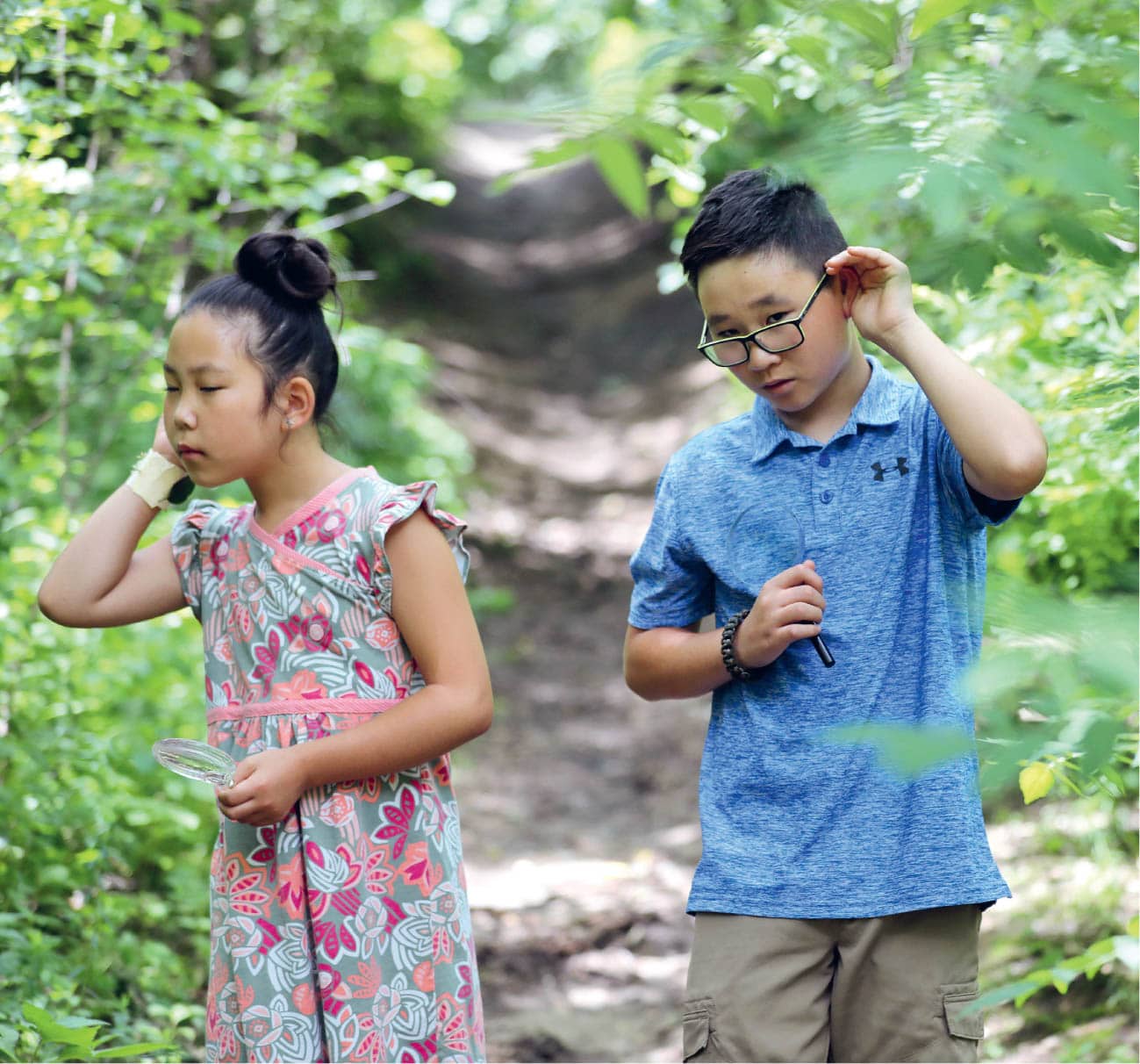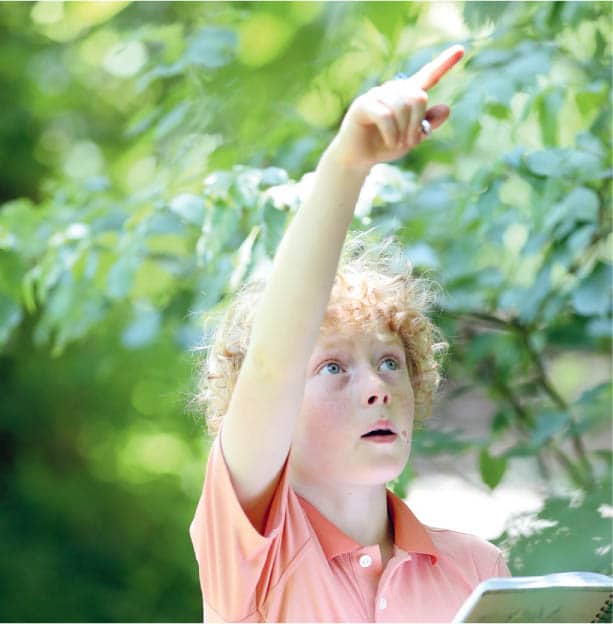 LAB 22
LAB 22 
Luis Baptista b. 1941
ORNITHOLOGY/BIRD VOCALIZATIONS

TEA HOUSE FOR BIRDS
Luis Felipe Baptista, a famous ornithologist (bird scientist) of Portuguese-Chinese descent, was born in Hong Kong in 1941. When he was young, his father took him to a teahouse where people brought their caged birds so they could listen to birdsong while they drank tea. The experience ignited his passion for birds, and he started raising canaries of his own. As they grew, he sang to them and was surprised to discover that as adults, his pets sang exactly like he did.
SAN FRANCISCO
When he was a teenager, Luis’s family emigrated from Hong Kong to San Francisco, where he got a job working as an assistant in the botany and ornithology departments at the California Academy of Sciences. He completed a bachelors and master’s degree at the University of San Francisco and got a Ph.D. from the University of California–Berkeley, which was just across the bay.
THE SPARROW MAN OF GOLDEN GATE PARK
After graduate school, Luis moved to Germany to study the vocalizations (calls) of a bird called the common chaffinch. His research revealed that the finches had a language all their own. When he returned to California in 1975, he was interested in learning more about the song of another bird, the white-crowned sparrow. Eventually, he was able to recognize the voice of every white-crowned sparrow in San Francisco’s Golden Gate Park and could recognize the difference between sparrow songs in locations all around the Bay Area.
A TEACHER AND A COLLEAGUE
The work of Luis Baptista helped scientists understand how birds learn songs and develop new ones. Dr. Baptista was a beloved professor whose students found him witty, funny, and charming. He worked with a diverse group of scientists and partnered with the San Francisco Zoo to reintroduce an almost-extinct species of doves into the wild. His book The Life of Birds, which he wrote with Joel C. Welty, inspired many students to study ornithology.
BIOMUSIC
Luis Baptista was famous for his ability to imitate sparrow songs perfectly, whistling them at half-speed. A lifelong music-lover, in one of his last lectures he talked about how humans incorporate bird song into their music and suggested that invention of music by birds and humans might be similar. Dr. Baptista died in 2000.
IN TODAY’S WORLD
Birds are found in ecosystems all around the planet. Today, scientists study the numbers, diversity, migration, breeding habits, and nesting grounds of birds to learn more about how our planet’s environment is changing as the result of human activity.

Luis Baptista had an ear for bird calls and could recognize the voice of every whitecrowned sparrow in San Francisco’s Golden Gate Park. Try your hand at listening and whistling by going outdoors to watch and listen for birds. Can you learn to identify them by their vocalizations (calls)? 1 Before you head outside, go online or use a book to research what species of birds are commonly found where you live. Remember that many birds migrate (move) from place to place, so depending on the month, you may find different species in your area. 2 Go to a website such as audubon.org to see what the birds in your area look like. Listen to recording of their calls. Use your notebook to write a description of the calls and songs. 3 Go outdoors to a local park, field, or wooded area at a time when there won’t be too many people around. Keep your eyes and ears open as you walk, watching for birds. If you see a bird, look for distinguishing features such as size, color, and markings. Binoculars are helpful for visual identification. Fig. 1, Fig. 2. Fig. 1. Find a spot to look for birds. Fig. 2. Binoculars are helpful for identifying birds. 4 Stand or sit down in a quiet spot, close your eyes, and listen for birds. In addition to calls, you may hear wings or the drum-like sound of a woodpecker hammering on a tree. Fig. 3. Fig. 3. Close your eyes and listen for birds. 5 Try to isolate the call of a single bird. Record what you hear in your notebook. Is it a high or low sound? Is it a song or a short call? Does it match the descriptions you wrote down or the calls you listened to? Fig. 4. Fig. 4. Try to isolate the call of a single bird. 6 Try to repeat the calls you learn by whistling. Fig. 5, Fig. 6. Fig. 5. Repeat the bird call by whistling. Fig. 6. Can you imitate their trills and whistles? 7 Use a bird identification book or app to find the names of the species you see and hear. Record them in your notebook. CREATIVE ENRICHMENT Return to the same spot several times a week. Listen and watch for birds every day, recording what you discover in your notebook. Become familiar with the avian inhabitants of a park, field, or wooded area so you can identify the species that live there. If you return to the same area frequently, you may learn to identify individual birds by their call and appearance. THE BIOLOGY BEHIND THE FUN The best way to find birds is not with your eyes, but with your ears. Even experts in bird identification sometimes listen for the calls and songs of birds to distinguish species that look alike but have different vocalizations. Birds make sound through a tiny organ called the syrinx. Some can only produce a few notes, while others have a wide vocal range for making trills and whistles. They use songs to attract mates and defend their territories and shorter, simple calls to talk to each other and warn of threats. People who “bird by ear” use words such as trill, buzz, rich, thin, harsh, whistling, flute-like, bell-like, and metallic. Many birds are most active early in the morning and less active when it is very hot outside. It can be overwhelming to pick out the song of a single bird when many birds are singing, but with practice you should be able to identify the songs of the birds in your neighborhood.ORNITHOLOGY/BIRD VOCALIZATIONS
MATERIALS
SAFETY TIPS AND HINTS
PROTOCOL






